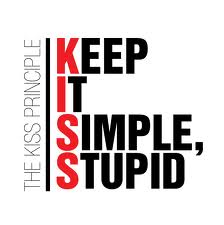Surprisingly, people got very sentimental over
their dusty binders full of candidate prospects.
As someone who keeps stacks of paper - and not very well organized - I can
honestly thank my lucky wildcard asterisks for the internet.
Sourcing has changed in three evolutionary ways,
according to my perspective. It’s the technology that supports the sourcing
activity, the architecture of the teams that tackle the research, and the
tactics that today’s sourcers have learned to leverage.
Tools
There’s a bevy of sourcing tools out there.
Sourcing automation tools are intended for finding larger volumes of candidate
prospects. They can take many forms and data sources, including:
- Resume database access from job boards,
both general and niche
- Manual and automated search from major
search engines like Google, Bing, Yahoo
- Custom career search engines like Indeed,
SimplyHired and Beyond
- Sourcing aggregators like InfoGist,
Broadlook Diver, TalentHook and SourcePoint
Sourcing augmentation tools are about
finding those “purple unicorns” or the hard-to-source prospects. The majority
of these individuals are passive and have limited information online.
Most of these take advantage of social
conversation data, based on influencers, keywords and semantic search.
- Social
sourcing platforms like Entelo, Diver, Gild, TalentBin, Rolepoint and OpenWeb
- GitHub,
StackOverflow, Reddit, the list goes on…
Teams
“Sourcing is typically part of the recruiting
function performed by the HR professional, but it may also be conducted by
managers within the company.”
Full Life-cycle Recruiters
Long-been the champions of the corporate world,
the full-desk recruiter manages everything from the approval of the requisition
to the job description, the sourcing, screening and assessment, all the way
through interview and offer. Taking on every stage of the process means that
the recruiter is the admin, brand ambassador, talent advisor, quality control
and master negotiator, all in one. Which also means that he or she can
realistically only handle so many reqs. The process of sourcing leads typically
(but not always) takes a backseat to filtering through existing applicants.
Sourcing Plate-spinners
I’m talking about individuals that serve in a
corporate or agency environment supporting a recruiter, or more likely, a team
of recruiters. Having spent some time in the RPO world at the start of my
career, I understand this model intimately. It wasn’t the most common method at
the time, but has gained popularity. By separating responsibilities, you’re
able to focus and refine your skills on one aspect of candidate generation: the
research. You’re also able to work more closely with each recruiter and hiring
manager (depending on the client relationship) to understand the job
requirements.
Sourcing Teams
Separating what I call the upstream activities -
research, first contact, pipelining and engagement - the sourcing function
becomes the new face of the recruiting team. The de facto employment
brand ambassadors in a system that understands the value of sourcing. Most
teams are divided by internal business function or simply by geography, which
allows deep understanding and a network of knowledge about a company’s hiring
needs. After the prospect applies in the applicant tracking system, it’s up to
the recruiting team, which now serves as more of an assessment and account
manager function for the hiring managers.
The hiring managers also do their fair share of
sourcing, because they have industry contacts and established networks to give
the talent acquisition team a head start.
Tactics
“Sourcing can identify either candidates who are
not actively looking for job opportunities (passive job seekers) or candidates
who are actively searching for jobs (active job seekers).”
Sourcing passive job seekers can include direct
calls to businesses that employ individuals who match the key requirements of
the position. Some people call it rusing, others just call it telephone
sourcing. It can also be accomplished through networking with various
business-related groups.
Both passive and active job seekers can be
located by sourcing job boards, social media sites, corporate alumni
associations and through all types of networking. After all, a resume that’s
three years old in a job board database, may lead you to someone who’s no
longer looking and thus no longer source-able on a career or job site. There’s
gold in them there databases.
Another powerful tactic that’s gaining momentum is community engagement, or
leveraging inbound marketing strategies to start recruiting conversations. By
taking a holistic view of a candidate profile or persona, you can curate
shareable content that’s keyword-engineered to attract talent. Using a free
service like Google Trends, you can see what others are reading
online and searching for by related terms. (Side note: Who knew actuaries like
to play Sudoku?)
Becoming a reliable source of information, you
gain both of the key ingredients to unlocking employment commerce: 1) trust and
2) relevance.
Next up, Sourcing: What It Could Be
About Bryan Chaney: Bryan Chaney is a Talent Branding and Attraction Strategist. He most recently led employment branding and social media for corporate recruitment at Aon. Previously, he developed the recruitment marketing arm of a Texas based RPO provider that serves SMB and Fortune clients. He serves on the board of Social Media Breakfast in Austin and founded careerconnects.org, a community event platform, to gather niche recruiting and HR professionals with candidates to share career strategies. The Huffington Post recently named him one of the Top 100 Most Social HR Experts on Twitter. Connect with Bryan for consulting and speaking availability at Bryan Chaney.












